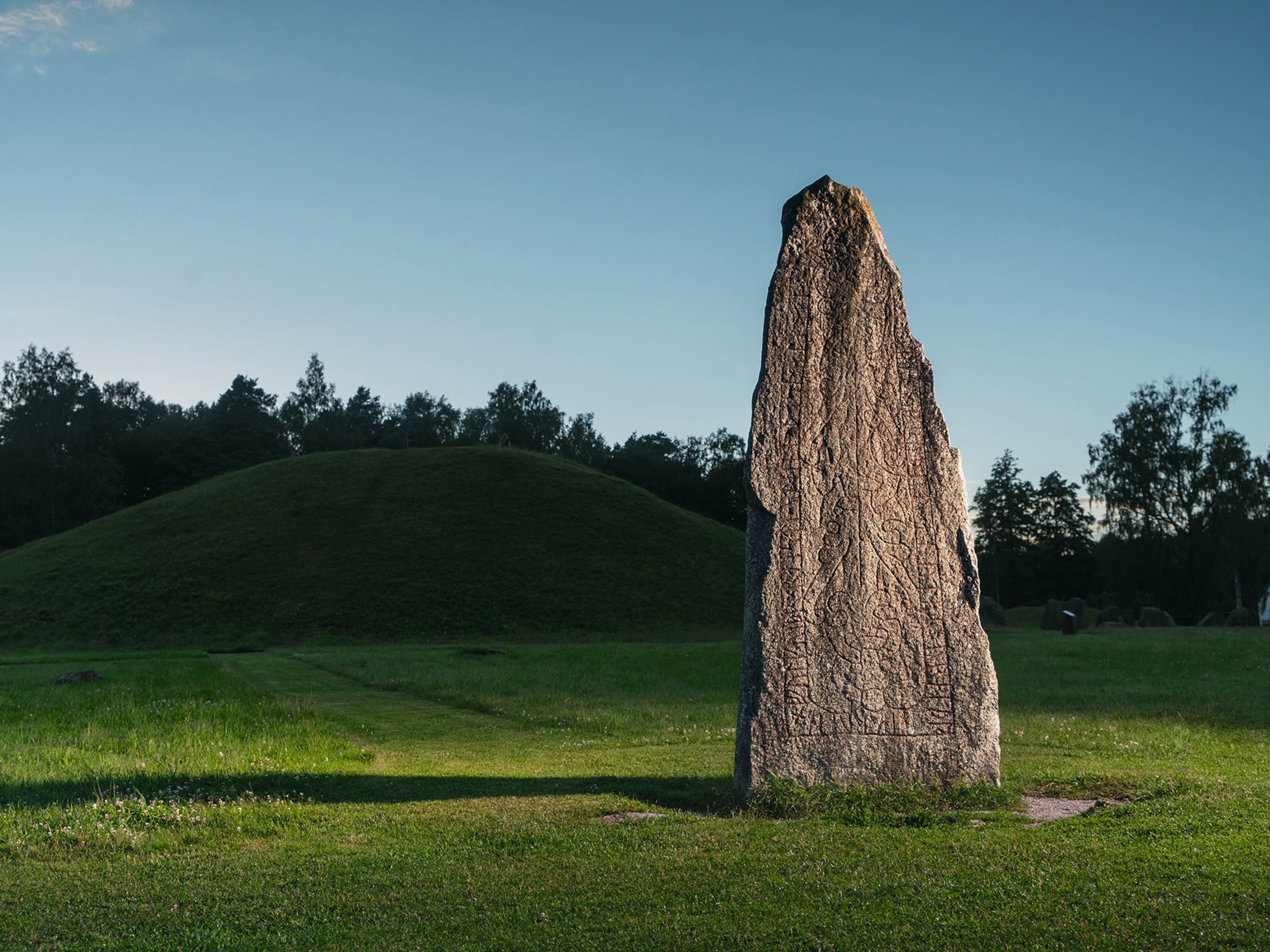
Viking ship's buried clues may reveal identities of mystery women
Found buried on a farm in Oseberg, Norway, an ancient Viking ship held sleighs, tapestries, silken bands, and the bones of two unidentified women.
During the late 19th century, a young Norwegian farmer, Johannes Hansen, arrived in the United States where—like many Scandinavians of the period—he had high hopes of starting a new life. However, an encounter with a fortune teller there made him change his plans. He learned that he need not suffer hardships in America to get rich because hidden on his farm back home was a great treasure.
This fateful encounter, described in a 1930 compilation of local history of Oseberg in southern Norway, may be nothing more than a yarn, but it reveals the intrigue and legends that surround one of the most exciting discoveries from the Viking age.

Hansen returned to Oseberg. He started to excavate a curious mound on his land but found nothing. He halted digging, speculating that the mound was just a burial site of Black Death victims from the 1349 epidemic. (This Mass Grave May Belong to 'Great Viking Army.')
Hansen and his neighbors had good reason to suspect there might be important archaeological sites in the area. In 1879 two teenagers in Gokstad, a town in the same region of Vestfold as Oseberg, discovered the burial place of a ninth-century Viking prince. The mysterious mound had also yielded a fantastic discovery: an entire wooden Viking ship encased in the dirt. (What you don't know about the Vikings may surprise you.)
Buried boat
In 1903 Knut Rom, one of Hansen’s neighbors, bought the Oseberg farm. Rom continued to search the property and soon did find something: a wooden fragment measuring only eight inches. It was a small find that heralded something much bigger.
Sixty miles away, in the Norwegian capital, Oslo, Rom approached Professor Gabriel Gustafson of the University Museum of National Antiquities. At first it seemed the veteran archaeologist might dismiss this farmer out of hand— but after Rom presented him with the wooden fragment, Gustafson marveled at the rich, intricate carving. He had no doubt about the fragment’s Viking origins. (Why were archaeologists so excited to find a Viking comb?)

The very next day the professor went to Oseberg and explored the mound to evaluate the site. On August 10, 1903, he informed the Norwegian press that a significant, new Viking burial ship had been found. Despite the fortune teller’s predictions, Knut Rom, not Hansen, turned out to be the beneficiary of the treasure hunt: Rom received 12,000 Norwegian kroner (about $1,400) for the land—a considerable sum of money at the time.
Digging begins
The excavation began the following spring. The burial mound, 130 feet wide and 19 feet high, was made from blue clay and stones covered with turf from the local marshlands. This protective layer provided the ideal conditions to preserve wood, which explains why the Oseberg ship’s condition was better than the vessel found in Gokstad. The weight of the earth, however, had crushed the structure and its contents. Experts took years to put all the parts back together. (Archeaologists use ground penetrating radar to find Viking burial ships.)

After excavation, the ship measured 70 feet long and 16 feet wide. It had been placed with the prow facing the sea. The funeral chamber itself was in the stern, constructed from wood that has been dated to A.D. 834. Gustafson realized the tomb had been looted, probably soon after the burial. The thieves entered through the prow, broke into the tomb, and stole what is thought now to have been the most valuable grave goods, scattering the bones in the process. (How to fight like a Viking)
Royal bones?
The most recent studies indicate that these bones belonged to two women: one approximatelt 70 years old and the other much younger, about 50 years of age. There was immediate speculation about their identity: Some believed one of the women could be Queen Åsa, the grandmother of Harald I (A.D. 860-940), the first king of a united Norway. Others believed one of the women was a high priestess. Whoever they were, their rich attire indicated that they held important positions in Viking society. (Famous Viking Warrior Was a Woman, DNA Reveals.)
Some scholars believe that one of them—it is not known whom—was probably sacrificed to accompany the higher ranking person in her long journey in the afterlife.
A Ship's Purpose

It is not known for sure why the Oseberg ship was first built. Was it originally intended to be a lavish burial chamber or a working ship? According to the Viking Ship Museum in Oslo, Norway, where it is now on display, scholars believe that the Oseberg ship may have been built somewhere in western Norway, around 820 A.D. However, the Oseberg ship’s design yields no clues to its intended function. The design closely resembles that of a typical working Viking ship, which could be powered by either sails or oars, but no solid proof exists to show the boat ever went to sea.
Apart from the ship itself, the grave goods that had been left undisturbed included objects for everyday use: beds, tapestries, clothes, combs, farming tools, and tents. There was also a cart, along with the remains of 15 horses, 6 dogs, and 2 cows. The tomb was furnished with everything the deceased might need as they boarded their richly carved vessel for its last, mysterious voyage into the world of the dead.





